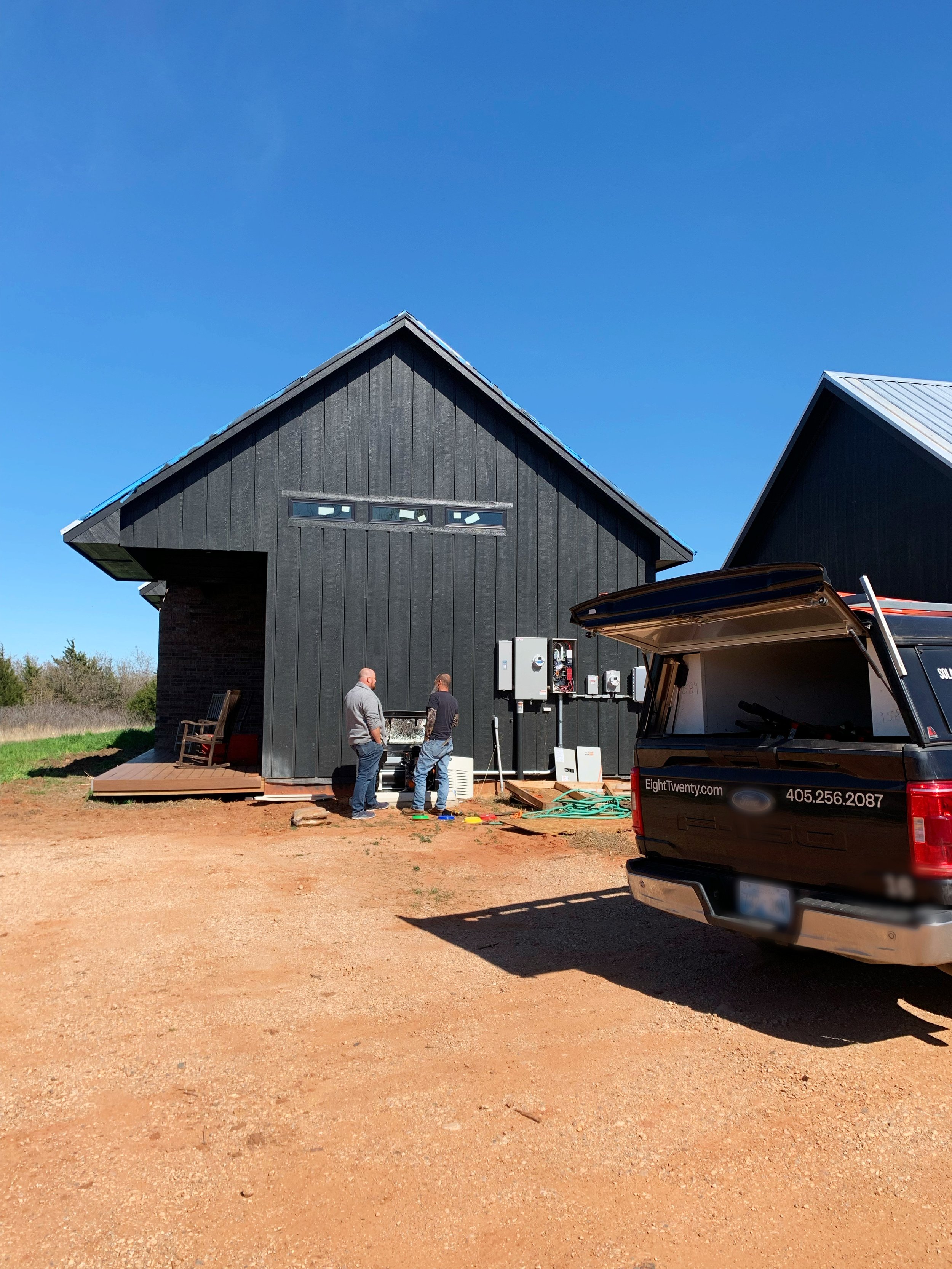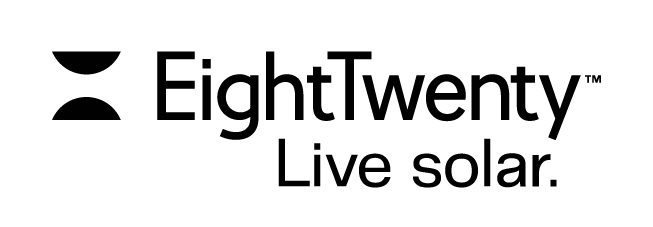Save on Monthly Utilities: Active and Passive Solar Energy
The sun is shining and kids are playing outside. The cool shady porch is an oasis from the summer heat. You picture your home as a place of comfort and relaxation in the summer months. With rising electrical costs though, cooling your home is a financial challenge.
Everyone wants their home to be more efficient. Whatever the season, you are looking for comfort and convenience. Simple processes and low cost maintenance. The sun is our friend in this scenario and if you work with it, you can enjoy free warmth in the winter and cool comfort in the summer.
At Green Couch Design we love taking advantage of free, and nature generally is free. The beauty of a summer day goes deeper than just the warm temperatures and the soft puffy clouds. With just a little planning the warm sun can give you resources and fuel your home. Oklahoma is a “Cooling State” meaning we have our homes HVAC systems on the cooling setting more than we have them on the heat setting. That means we want to hold that heat out and take in the shade, but we also love to soak up the sun in the winter months if we can.
Passive and Active solar systems have been used in buildings for years. How you capture that solar energy and how you use it is dependent upon key factors of your home.
Passive Solar uses the design of your home; Orientation, Materials, and Fenestration (fancy word for how we place windows and doors) to take advantage of the sun's energy.
Active Solar is very simply solar panels or receptors that take the sun's energy and turn it into electricity. Both can be incredibly helpful and useful for your Oklahoma home.
Passive Solar:
The shape of your roof, the materials you use, the venting, the windows and doors in your home, and the angles you place them at, all play a key role in how your home uses its energy. It isn’t something you always think about when you’re working on a new build, but we’ve got you covered.
Orientation
Your home's alignment to the path of the sun impacts how you can use solar energy. The sun’s path in Oklahoma is a pretty traditional process. Rise in the east, set in the west and track to the south. But it’s a little more involved than that. When you use Sun Direction, you get an actual image of what to expect, This website is our favorite for defining the sun path in your area.
How your home is oriented to the sun defines how much heat/energy is taken in and how much is kept out. We’ve all had that moment when the sun is beating through a window or a glass door and blinding us, or we sit near the window in an office or a car and the side of us in the sun is baking. Just like your person, your home soaks up heat or lets it go depending upon how it is oriented to the sun.
Generally you want your home in Oklahoma to turn its “back” on the sun, and open to the north. This gives you great natural lighting and takes advantage of the sun's heating on the back of the home so that your bedrooms and such soak up heat in the day and stay warmer at night. This isn’t always possible and so we have other options, but as you look for a home, or build, it’s beneficial to be thinking about the direction of the sun and how that may impact your home.
Materials
There are a plethora of different materials for your home out there and believe me when I say, they are not all the same! Different types of materials respond to the sun differently, some push the energy/heat away and some let it right through, still others soak it up and radiate it back out or just deflect it to another location. All of this affects you, your home, and your energy bill.
The best materials for deflecting or pushing heat away, and therefore, some of the best for your Oklahoma home, are reflective materials. You have to be careful with these materials though as they can impact our neighbors significantly if you aren’t careful with the placement. The best place to use reflective materials is in roofing. This is why our home has a silver, metal roof. This pushes the heat out and bounces it away from the home keeping the inside cool and comfortable.
The best materials for soaking up heat and radiating warmth are dense materials with lots of mass. Concrete, brick, stone, traditional forms of stucco and plaster if done in a thick enough depth can capture heat. These materials are great for exterior walls and interior walls if being used for passive heating. Make sure the sun can hit these materials directly if using passive heating internally. On the exterior you gain insulation and density so that the heat of the sun never gets to your interior walls.
Materials that allow the sun's energy or heat to pass right through are non reflective metals, glass, siding and materials with thinner profiles. Which means that you are relying on your insulation to handle the breakdown of that heat gain in your home. In our little farm house we could feel the heat coming through the walls in the summer. The siding was passing that heat right into the wall, and the limited insulation wasn’t helping. This is what we don’t want! We are seeking to stabilize the temperature in your home to reduce your heating and cooling significantly.
Fenestration
One of the ways we address the issue of less than ideal orientation is through fenestration and heat capture. If your home has less than ideal orientation to the sun, we can take advantage of this in a couple of ways. First and simplest is to shade those windows. Adding a deep covered porch or extended eaves can shade your windows and this significantly reduces the heat gain and thus your cooling costs in the home. Knowing the sun angles in your area, we can calculate the depth of porch or shade structure you need to keep the summer sun out and let the winter sun in. Shades and blinds can help as well, and work well to keep the glare and heat to a minimum.
If the area of direct sunlight is not a primary area of the home and can be allowed to take on the solar heat, we can also use this as a passive heating element to the home. By adding brick to an exterior wall that has direct sunlight on it, or opening up a concrete, stone or brick floor with direct sunlight you soak up that heat and the “mass” of the wall or floor will radiate heat in the cooler evening and night hours helping to balance the energy you use.
We recommend thinking about passive solar energy whenever possible, it’s not hard at all. That natural impulse to put a shade over the back deck. Just follow that same impulse in your home. If there is a room that gets really hot in the summer look at the options above and see if one of those could solve that problem. The same goes for a room that is cold in the winter.
How do you get more sun in that area of your home, or transfer some of the sun's heat into that space?
Active Solar
We’ve spoken about solar panels and our solar process before. We love solar power, and we care deeply for the freedom and environmental impact that solar energy can bring. What’s even better, is that the passive aspects of orientation, fenestration and materials all support solar panel installation. The orientation can really impact your solar panel efficiency.
We still love our solar panels, and are seeing awesome returns on our investment. In 2023 we are seeing less than $20 per month on our electric bill. The amount we pay monthly on our solar loan offsets the cost of a high utility bill. Basically, it is money we would already be paying the utility company, but now we are using it to pay off our loan. We don’t stress over our thermostat sitting a few degrees higher or lower because we pay the same amount every month. We had heard rumors about getting a big tax break on solar and can confirm that we got close to $12,000 in tax write off this year! In April we had a significant storm event with up to quarter size hail and our panels not only weathered the storm but protected our roof from what could have been a pretty significant event for most homeowners.
We cannot stop talking about the impact solar energy has made on our home!
(incase you couldn’t tell) Our Recommended Oklahoma Solar Power Company
EightTwenty is the company we selected in Oklahoma for our solar. After a year of wonderful customer service and using their product personally we are proud to say that we are now an EightTwenty Referral Partner (so tell them we sent ya!). If you are considering solar and live in Arkansas, Indiana, Kansas, Kentucky, Missouri, Oklahoma, or Texas you can learn more about EightTwenty here. Or, book a meeting here. They’ll provide a couple of packages to choose from to service your initial and long term needs and budget.
Whether you're building new, renovating, or just need a little help with some updates to your dream home. We are here and we love looking at alternative ways to help your home work for you.
About the Author
Cale is a Co-Owner and Principal Architect at Green Couch Design, a boutique architecture firm located in Oklahoma. He writes about architecture, construction, development, leasing, homesteading, place-making, business ownership, and dose of nerdom when it’s appropriate.







